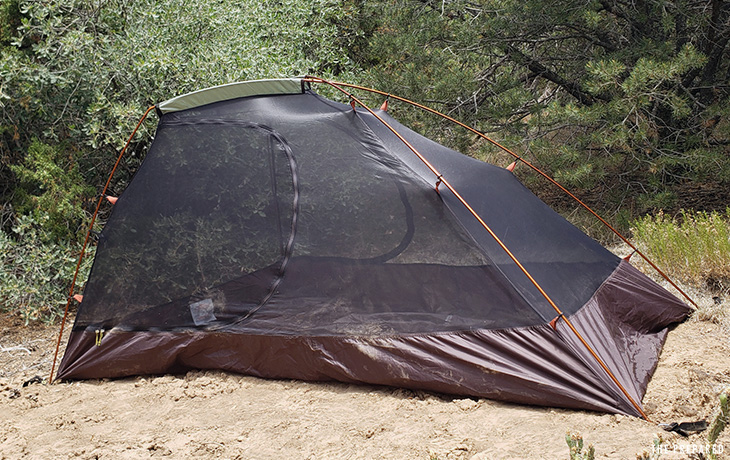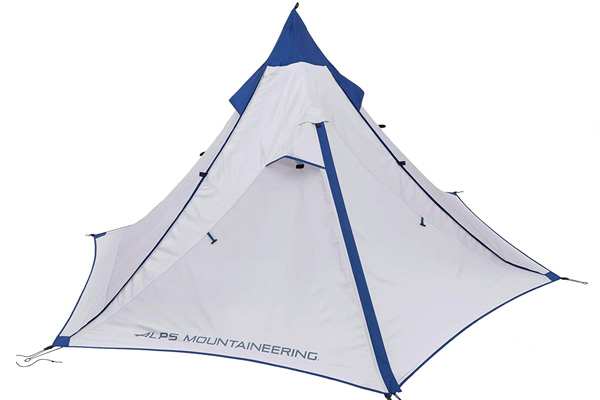You can either make shelter with random stuff at the scene or carry shelter with you. The basic form of carrying shelter is a tarp and paracord, which you can string up to create basic barriers between you and the elements.
Reviews: Best tarp, sleeping bag, and paracord
While a tent is not necessary, there are plenty of benefits to having one in an emergency. That’s why a tarp and paracord are ranked as a higher priority in the bug out bag checklist, with a tent coming in towards the end as an optional “nice to have” for more robust kits. Most of our staff have these kinds of tents strapped to the outside of their main go-bag.
Experts we interviewed agreed. Dan Baird, a leading backcountry primitive survival instructor with the California Survival School, prefers tarps for himself but recommends tents for most people. Jessie Krebs, U.S. Air Force SERE Specialist and Instructor for SERE Training, says “For people that don’t have time or won’t practice the skills with knots and rigging, a tent is going to be their best option, even though you have more configuration options with a tarp.”
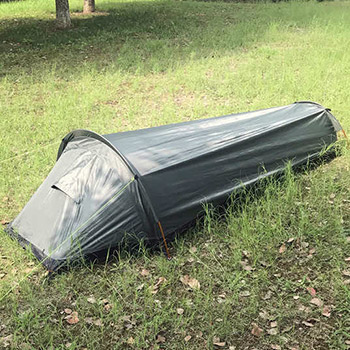
There are other options besides a tent or tarp — namely bivvies and hammocks. We generally recommend you only use a hammock for your go-bag if you’re already experienced with hammock camping and understand your local terrain.
Bivvies are a gray-area hybrid between sleeping bags and tents. Some of the cheaper “emergency tents” found online are essentially bivvies, but they call them tents because there might be a pole or two to create headroom.
If you’re a veteran or someone else already comfortable with bivvies, they’re okay, but generally not the best choice for typical people’s go-bags. Bivvies don’t have much room (or any at all) to store your gear inside. And they tend to trap more condensation.
In short, you can sit up in a tent but you can’t in a bivvy.
Pros and cons of carrying a tent in your bug out bag:
- Easier to set up, especially in harsh or chaotic conditions. You don’t have to remember knots and how to make a proper covering, for example.
- Great protection from the elements, namely wind, rain, and snow. Tents are fully enclosed. Other shelter types usually aren’t.
- Great protection from creepy crawlies like snakes, scorpions, and mosquitoes, and a little protection against larger predators like bears and coyotes. Tarps usually offer no protection in this regard.
- Potentially more privacy (eg. if you’re camped in a crowded evacuation area) and security for your gear.
- Costs more than a simple shelter.
- More weight and volume to carry.
- Harder to find models that blend in with the environment.
- Might require relatively flat ground that’s soft enough to drive stakes into.
But not every tent is appropriate for prepping. Sure, you might have your big car camping tent around the house anyway, but “buying a tent for prepping” means buying a small portable survival tent you can easily carry on foot as part of a go-bag.
Buying tips:
- You want to go as small as possible for just you and your gear, possibly including a smaller child or pet. Don’t carry big tents for big groups — it’s better to have multiple smaller tents.
- Even though there are tents labeled as “one person” and that might seem like the right answer, two-person tents are the better sweet spot for most people.
- The difference in cost and packed size/weight between a one- and two-person tent is pretty small (eg. 5%) — but the extra space you get once deployed can be a whopping 50%. So you get a lot more utility for just a little bit more pain.
- Avoid loud colors.
- Stick with known brands. There’s no need to buy Chinese knockoffs, even in the budget tier.
- A quality tent should come with a rain fly, poles, carrying sack, and, if appropriate, guy lines and stakes.
- Ultralight tents are great — you always want to shave ounces and pounds wherever you can — but the extreme UL tents can be too fragile for prepping/emergencies.
- Keep in mind that a tent is less about warmth and more about protecting you from the elements. Warmth comes from your body, clothing, and other gear/tactics.
- Be sure to practice with your gear before you depend on it as a prep — even if it’s in your backyard!
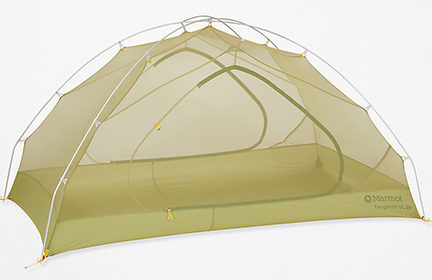
Best for most people:
Marmot Tungsten UL 2-Persont Tent
There are more elaborate and bomb-proof tents available than the Marmot Tungsten UL 2-Person Tent. But this lightweight (trail weight 2 lbs 15 oz) middle-of-the-road offering is best-in-class when it comes to durability and utility at a price most people can stomach for a tent they would mostly use in some future emergency.
Dan Baird says he’s got years field-testing Marmot tents and trusts their performance and durability. That aligns with their reputation for quality without the price premium you pay with similarly-designed brands. The limited lifetime warranty won’t cover punctures or burn holes, but provides reassurance that the company will repair or replace any shortcomings.
The Marmot Tungsten 2-Person canopy is composed of 100% Nylon mesh and the floor is made of highly durable, waterproof nylon fabric. The fly is made from a waterproof rip-stop polyester that is coated with silicone and polyurethane. The silicone adds strength and UV resistance to the fly, and the polyurethane will help with waterproofing. An advantage of polyester materials is that they sag less than nylon when wet.
Another factor we used when combing the market was to favor tents with simpler designs. Complicated pole structures are more likely to fail and much harder to repair or replace — something that could be important in the type of emergencies where you’d be living in this tent.
The Tungsten is relatively easy to set up and take down. The walls are more vertical than some competitors, which keeps the tent fabric from squeezing against your sleeping bag or other insulation layers (insulation doesn’t perform as well when compressed.) The olive drab (ish) colorway is thankfully muted, though blaze orange is available if that’s your thing and you aren’t concerned with concealment.
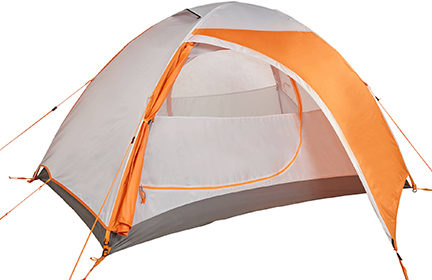
Great value:
Ozark Trail Two-Person
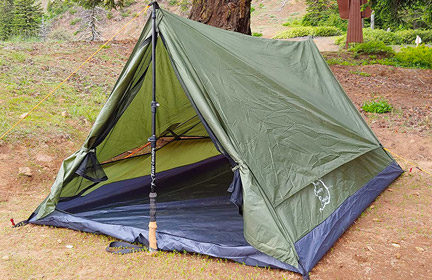
Simple and rugged:
River Country Products Trekker Tent
It’s possible to spend less and get a budget tent that will still hold up in basic or short emergencies — the ‘sacrifices’ with cheaper tents tend to be with heavier materials, more limited warranties, less long-term durability, and fewer thoughtful design features.
You can find Ozark Trail tents (Walmart’s house outdoor brand) for as cheap as $20. But we recommend spending a little more to get the Ozark Trail Two-Person Backpacking Tent. The design and materials are similar to much pricier tents: minimal-sag polyester rain fly, heavy-duty 70D nylon base, aluminum poles, guylines, and aluminum stakes. Walmart claims the minimum trail weight is 2 lbs 2 oz, but in practice is closer to 4 lbs.
Another good budget option is the surprisingly low-cost River Country Products Trekker Tent 2.2. While it isn’t quite a full twin-wall tent, the design is smart and makes the most of a very minimal amount of material. The structure is created by two trekking poles but can also be set up with 550 paracord or sticks cut to length. This option eliminates one of the main weaknesses of a tent as shelter: the possibility of breaking an irreplaceable tent pole in the field. We generally recommend that most people carry tent poles, but if you’re experienced in the bush and/or already use trekking poles anyway, this can be a nice option.
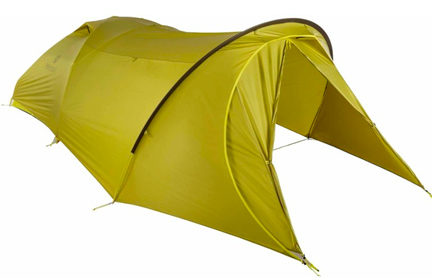
More shelter:
Marmot Tungsten UL Hatchback 3 Tent
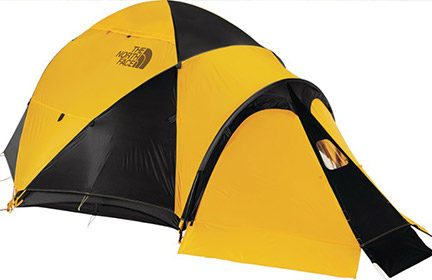
Turtle mode:
The North Face VE 25
A big brother to the main pick, the 6-pound Marmot Tungsten UL Hatchback 3 Tent adds space for another person/pet and a massive vestibule. The same tough nylon and polyester fabrics are used, but the overall waterproof and weather protection ratings go up from the 2P version. Like the smaller Tungsten, this comes in muted colors and has thoughtful designs to maximize interior space. 6 lbs 1.5 oz vs the 2P’s 2 lbs. 14.9 oz.
“For true four-season, expedition-type tents where I’m going to be in really bad places I like The North Face’s VE 25,” says Baird. “It has been replicated many times, but not well, and it’s the gold standard for expedition tents. It takes a beating and holds up” — though he emphasized he’s only reaching for it in extreme circumstances. At 9 lbs 8 oz and 3-4 times the cost of the main picks, the VE 25 and similar options would only be appropriate for those prepping in places like northern Alaska.
Be prepared. Don’t be a victim.
Want more great content and giveaways? Sign up for The Prepared’s free newsletter and get the best prepping content straight to your inbox. 1-2 emails a month, 0% spam.
Contenders
Although not currently top picks, these models are close contenders.
ALPS Mountaineering Trail Tipi. The simple pyramid shape offers a big floor area but less usable headroom than other designs. Its advantages are in weight (3 lbs 10 oz) and versatility. The Tipi is supported by a single trekking pole — but you can also use a stick or some other DIY method to prop it up, or use cordage to hold the peak point from above.
ALPS Mountaineering Zephyr 2 Tent. This is an awesome tent that came very close to being our main pick. The only reason it was edged out by the Marmot Tungsten UL 2-person tent was because it was heavier (4 lb 11 oz) and though it is made of rugged waterproof polyester, Marmot made a lighter product with a better blend of fabrics. If your budget for a high performance test is less than $200, look at this tent.
Kelty Late Start 2 Tent. An awesome offering from Kelty, the Late Start 2 is a tough, though slightly heavy tent (4 lbs) for its class. The design is simple and easy to use, and is made with a durable polyester.
Mountainsmith Bear Creek 2. This tent is simple, light (4 lbs 3 oz), and cheap while still using modern materials and design. The narrow shape makes it a bit cozy to sleep two but offers plenty of room for solo campers.
REI Co-op Quarter Dome SL2 Tent. We had high hopes for this tent, especially since REI Co-op products tend to perform well relative to their price point. Weighing in at just 2 lbs 8 oz, this tent was similar to our top pick, the Marmot Tungsten UL 2-person tent. What we didn’t like was the hubbed pole set — which, if broken, is near impossible to fix in the field — and the generic nylon and ripstop nylon that REI used for the canopy, floor, and rainfly. For the same price you can get the Marmot Tungsten 2-person tent which, in our opinion, is made of better material and has a more robust pole system.
The North Face Stormbreak 2. This lower-end offering from TNF uses rugged polyester taffeta throughout and sports an intuitive two-pole design for easy setup and teardown. It’s very similar in cost, shape, stats, and performance to the Marmot Tungsten, but it’s slightly higher weight held it back (5 lbs 5 oz).
Top tent brands and price tiers
The tent market is crowded, with lots of options and brands that specialize in various price tiers or uses such as camping, hiking, bushcraft, and extreme expeditions.
Cheaper brands, for example, have done a good job in recent years of offering a decent product that won’t immediately fall apart — although they still lack some of the thoughtful design features as well as the lighter and more durable materials used in higher-end products. Warranty coverage generally gets weaker with cheaper tents, too.
Some brands cross two or three tiers, so this is just a rough sorting.
Low-cost brands (roughly $25 to $100):
- Coleman
- Ozark Trail (Walmart’s in-house brand)
- River Country Products
Mid-tier ($100 to $400):
- Alps
- Cabelas
- Eureka
- Kelty
- Marmot
- Mountainsmith
- NEMO
- North Face
- REI Co-op
- Sierra Designs
- Six Moon Designs
- Slumberjack
High-end ($400+):
I have a big family. Should I carry one big tent?
No. We often see preppers make the (very understandable) mistake of thinking: “I’ll have a big group when bugging out, so I should have a big tent to handle everyone.”
That mental model breaks a whole bunch of sane prepper rules — most importantly, you don’t know what will happen in an emergency, who will be with you, where you’ll be, etc.
What if the person with the big tent is separated? What if the one big tent has a failure? What if you can’t find enough flat and safe ground space to set up a large tent that requires staking?
Smaller tents are not only easier to carry, they are easier to set up and take down, less visible to threats, less likely to sag from snow or rain, might have a slight advantage in heat retention, etc.
If a child is small enough where they can’t/shouldn’t carry their own shelter (even the ultra-small bivvy-tent hybrid types), then they are small enough that you can tuck them into your tent if needed (and likely young enough to need your constant supervision anyway). Same goes for pets.
What’s the right size?
Even after focusing just on tents for one person (and maybe a pet or small kid) that are portable enough to be great for your go-bags, there’s still a choice about how big or small to go — namely, do you buy a bivy, one-, two-, or three-person tent.
Tips:
- Most average-sized adults should buy a two-person.
- Very petite people or those who want the minimalist tent possible can buy a one-person (or go smaller into bivvy territory).
- Very large people or those who want more room for gear and other humans/animals can go up to three-person.
- It’s pretty important to have enough room to keep your go-bag inside the tent so you can protect your supplies and keep your shoes dry.
- Although not critical if you want to go minimalist, we generally like being able to sit up inside the tent so you can be productive while protected.
Marketers tend to play games with tent capacities. It’s common to go to a store like REI, look inside a “six-person tent”, then shake your head and say “yeah right, that’s maybe big enough for three people!”
The industry labels tents based on the number of adults it can squeeze in — essentially sleeping with skin contact between people — with no other gear. That creates a mismatch between the claimed capacity and what most people feel like the capacity is in real life.
Tip: These labels are also independent of the actual dimensions, so if you’re particularly tall or wide, don’t forget to check out the footprint measurements.
Experts generally recommend tents labeled as “for two people.” A one-person tent might not be big enough to store your gear inside, which we think is a very valuable feature, and larger than that becomes unwieldy or unnecessary.
A lot more value for a little extra pain
Another reason to favor two-person tents is that, in practice, there isn’t much of a reason to choose a one-person instead.
When we compare the cost and packed weight and volume of a one-person vs. two-person, for most brands we find that you only add 5-20% in cost/weight/size to go from one to two people, while the actual floor space when deployed can be up to 50% larger. In other words: for just a little extra pain (money and load to carry), you get a lot more utility.
Comparing two versions each of two different models — notice the 50% increase in square footage:
| Model: | Tungsten 1P | Tungsten 2P | Passage 1P | Passage 2P |
|---|---|---|---|---|
| Price: | $349 | $379 | $140 | $160 |
| Weight: | 3 lb 8 oz | 4 lb 13 oz | 3 lb 11 oz | 4 lb 2 oz |
| Packed size: | 20” x 6” | 21” x 7” | 17” x 7.5” | 18” x 8” |
| Deployed: | 84” x 36” | 88” x 54” | 88” x 36” | 88” x 52” |
| Sq ft: | 20 | 32 | 20 | 31 |
Three or four seasons?
You’ll often see labels like “three-season tent.” That’s the most common type, and essentially means the tent is good for spring, summer, and fall.
A four-season tent is essentially a winter tent and would be better labeled as a “fourth-season tent” since they are generally only used in the winter in cold, snowy regions and are too specialized for us to recommend for general use.
A good three-season tent offers a balance of rigidity and weather protection with breathability to keep your tent from becoming a sweltering tomb in hotter conditions. Three-season tents will require additional measures in alpine environments in winter, but it’s easier to adapt a three-season tent to that narrow condition than shoehorning a heavy, hot and expensive four-season tent into the wider range of possible scenarios.
Other features to look for
Packed sizing that is narrower than your shoulders/body when strapped to your go-bag. Unless you end up with a pole-less option, it’s likely you’ll carry your tent by strapping it to the outside of your bug out backpack. Many of the best packs have straps specifically designed for this.
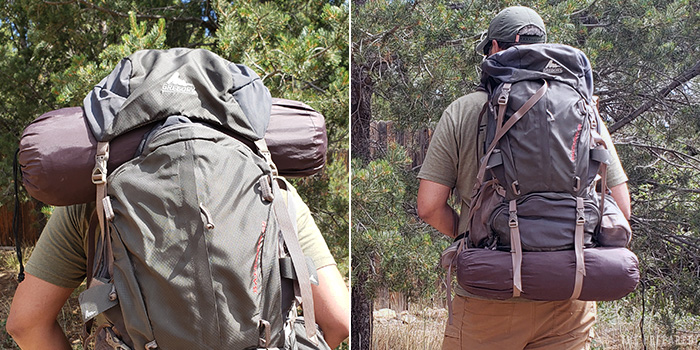
But you don’t want the tent to stick out past your body frame. When you’re bugging out, you might be in chaotic crowds, getting in and out of vehicles, walking through nature, and so on. Rigid things sticking out can get caught, torn, ripped away from you, or even used by an attacker to grab onto.
Overhead internal pockets. While not a critical feature, it’s nice when there are pockets towards the roof of the tent. You can place headlamps (or other types of small lights you’ll likely have in your go-bag) in the pocket, turning them into a sort of hands-free overhead light. Really comes in handy for extended stays and being able to work on stuff inside the privacy of your tent.
Not too heavy, not too light. The sweet spot tends to be in the 3-5 pound range. Ultralight tents save weight by cutting down on things like durability and features — which is fine for a weekend at the park, but not so great for unpredictable emergencies. On the other hand, you could get a waxed canvas tent that is bomb-proof but weighs 25 pounds.
Twin-wall construction: the base tent + rain fly. Most tents use this design because it allows air flow while reducing condensation. You can always choose not to put the rain fly over top, but it’s better to have it and not need it than the vice versa.
Light single-wall tents often require some shelter-building skills and supplemental gear to be effective, while four-season single-wall tents are niche products for extreme expedition conditions.
Water and wind repellency. Only the base and perhaps a few inches up the walls from the base of a twin-wall tent needs to be waterproof. Think of an umbrella: despite not being waterproof, the shape and taut fabric repel water just fine. Almost any tent you can buy will repel water at least in the short-term.
Some fabrics such as uncoated nylon will sag and stretch in heavy moisture and can seep water inside, so polyester is generally preferred. Seam-sealing is essential and is included in even most ultra-cheap tents.
Quality stitching and sealed seams. It’s not easy to tell when ordering online, but if deciding in person or judging whether or not to return an online order, pay attention to the quality of any stitching and seams. That’s where tents usually fail, and cheaper tents will cut corners. Look for fraying, uneven stitching, seams that easily allow water through, and so on — it will be visually obvious, even to a beginner. If you’re not confident in the joints, send it back.
Durable base that doesn’t require a separate footprint sheet. Some tents are designed assuming that you’ll put a separate sheet between the ground and bottom of the tent. Because that layer protects the bottom of the tent from rubs and tears, if the designers planned on you having that separate sheet, they may have cut down on weight/thickness in the tent base. But you don’t want to deal with multiple pieces or that dependency.
If you decide you need a footprint, consider cutting your own from lightweight, inexpensive Tyvek before spending on heavier custom options from tent manufacturers.
Simpler designs are better. Some designs get elaborate, requiring many poles and/or various lengths to create odd shapes. Each pole is a potential point of failure and adds to the difficulty or setting up and taking down your tent. And the more complicated the design, the harder it might be to replace it after SHTF.
Quality stakes. It’s not always necessary to stake your tent down, but you might want to in extreme weather. Some tents come with cheap stakes that don’t penetrate or hold onto the ground as well (eg. the stakes that look like straight and smooth round rods). Consider a set of aftermarket stakes. 6000 series aluminum or stainless steel are common — but you can get the more durable 7000 series without adding meaningful weight.
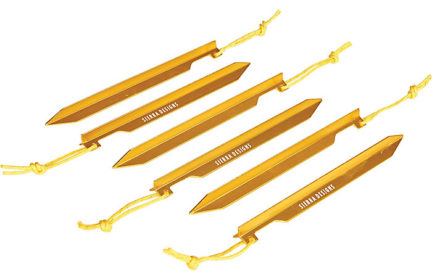
Strong and light:
Sierra Designs FL-STAKE
